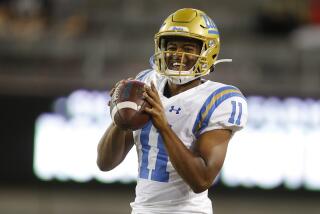Stanford Fund-Raising Success Is No Accident
STANFORD — Today in Encina Hall--once a dorm for Stanford University freshmen from Herbert Hoover to university Vice President Henry Riggs--computers churn out tailor-made lists of prospective donors.
The development office nearly tripled its pool of potential major donors--$100,000 and up--by holding 150 skull sessions with small groups of alumni around the country in 1983 and 1984.
Each participant was handed a customized list of 2,000 names, drawn from their class, region or other associations, and asked to rate their philanthropic capacity on a multiple-choice scale.
“It was a monumental undertaking, a very highly organized prospecting activity,” says Riggs, who runs Stanford’s fund-raising operation. “The scale and the automation we put into it was quite different than other places. But everybody does it.”
Stanford started with 1,500 major prospects. It wound up with nearly 4,000.
That was only the first step.
Making the Rounds
Stanford President Donald Kennedy and other university officials in January began making the rounds of 30 small, private dinners in major cities from Los Angeles to New York to sound out prospective donors. Kennedy called it “our test marketing.”
“We bring a dog-and-pony show,” says William Kimball, a San Francisco entrepreneur who is co-chairman of the campaign. “They’ve all been sent a draft of the prospectus ahead of time.”
The prospectus is a 7,500-word paper that lays out Stanford’s case and its spending blueprint. For now, the prospectus is a typescript marked “confidential” in red, but eventually it will find its way into a glossy pamphlet.
Kennedy brings charts--in bright red and white, the Stanford Cardinals’ colors--showing its campaign goals, and poses what director of development Bruce Hinchliffe calls “the billion-dollar question”: Should Stanford go for it all?
So far, says Kennedy, “the signals are pretty positive.”
“Our alumni and friends have felt as though they were holding a growth stock, and so it’s been relatively easy to persuade them that it’s worth their support,” says the former U.S. commissioner of food and drugs.
Kennedy is not distressed at the amount of time fund raising consumes. “Scientists have their hands out all the time. It’s also not really such a chore to raise money for something you believe in deeply,” he says.
Volunteers like Kimball, who have made their own big gifts, often call on key prospects.
Then, explains Kimball, “it’s a peer speaking to a peer. If a paid professional calls on him, it just doesn’t have the same impact.”
The rule of thumb in fund raising is that 90% of the money comes from 10% of the donors.
But Richard L. Bennett, Stanford’s director of campaign planning, says it is important to remember “people’s wealth changes.”
Someone who pledges $1,000 now “is going to be the person who pledges $10,000 in the next campaign,” he says, and $100,000 in the one after that.
Bigger Things
Bennett tells the story of a woman named Elaine Sweet, who gave $1 to Stanford’s first annual fund drive in the 1930s.
“The next year she gave $2, the next year $5. By the time the (1961) campaign came around, she pledged $1,000, then more and more and pretty soon she was giving us many thousands,” Bennett says.
When she died recently, she left her estate to Stanford: $5.5 million. A building is being constructed in her name.
The moral?
“One-dollar donors to the annual fund are very important.”
More to Read
Inside the business of entertainment
The Wide Shot brings you news, analysis and insights on everything from streaming wars to production — and what it all means for the future.
You may occasionally receive promotional content from the Los Angeles Times.










